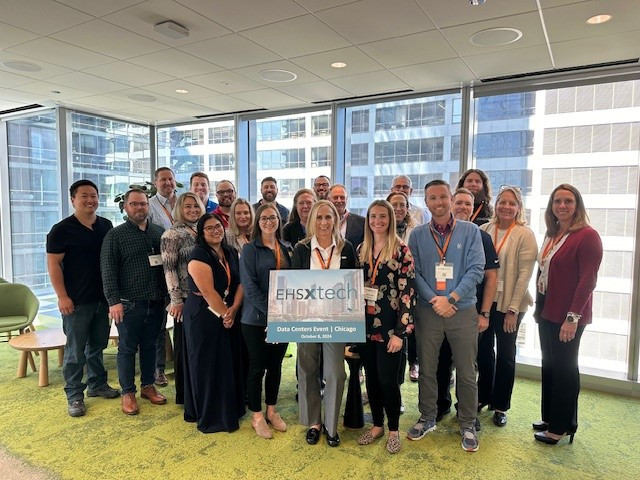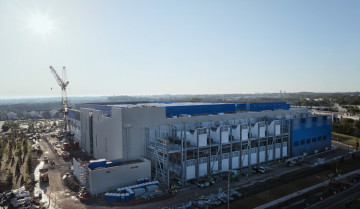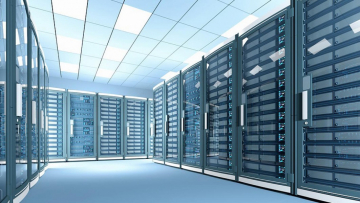In early October, over 20 EHS professionals, representing 12 different technology companies in the data center space, came together for EHSxTech, hosted at Salesforce in Chicago. This marked the second event focused on data centers. Over the past year, the industry has seen not only significant growth but also a heightened emphasis on Environment, Health, and Safety (EHS).
These data center companies have transitioned from reactive safety practices to a proactive EHS approach, with leadership grounded in clarity and purpose. By embracing the shared responsibility for EHS standards, industry leaders are fostering an open exchange of ideas and creating a collaborative knowledge base. This collective effort, driven by a commitment to protect workers and contractors, is shaping the future of EHS leadership and raising standards across the industry.
The discussions at this event centered around some of the most significant health and safety challenges in data centers, including the introduction of new tools and processes to address these issues. Participants also explored topics such as safety metrics, lone worker protocols, heat stress, noise management, and emerging EHS trends in the field. These gatherings foster an environment for open dialogue, emphasizing the non-competitive exchange of peer knowledge and best practices.
A Culture of Safety and Engagement
To kick the event off the keynote speaker presented some context for the day. He noted how data centers are going through rapid changes and it's important for us as safety professionals to understand and meet employees where they are at with consistent messaging and engagement of our programs. He emphasized that employee engagement is crucial, and their organization has set up Health and Safety programs which build employee trust, drive high performance, enhance risk resilience, and in turn help attract and retain top talent.
Continuing that theme, another EHS leader shared how EHS programs should be fully integrated into a company's culture with strategies that align with a company’s overall vision and are practical to implement. The goal is to empower employees to take action through engagement and adoption of EHS principles.
Lone Workers
One key topic from the event was the unique risks faced by lone workers in data centers, highlighting the need for targeted engagement and protection strategies. A primary takeaway on this topic includes ensuring lone worker safety is being proactively assessed. A couple of approaches to help control risks include:
- Communication within the organization and facility of risks of lone work, high risk tasks, and procedures
- Clear roles and responsibilities of workers and operations managers, and emergency action plans
- Determining the best technology and tools for lone workers (e.g. GPS tracking, two-way radios, etc.)
Heat Stress and Noise
Another focus of the event was addressing physical work conditions, especially the ongoing risks of heat stress and noise in the high-tech, high-energy environments of data centers. Key discussions included:
- Noise in data centers is a multifaceted hazard that can vary based on factors such as the acoustic landscape, fan noise, equipment density, maintenance schedules, and HVAC setup for cooling, particularly in hot aisles.
- Controlling noise risks through engineering controls remains limited, and although new technologies such as liquid cooling are being implemented, the verdict of noise reduction is yet to be determined. Additionally, PPE controls such as double hearing protection with Bluetooth-enabled features (e.g. Sensear) are being implemented in the interim.
- Heat stress remains a complex issue and a present risk throughout the indoor and outdoor data center environments. There are various approaches for assessing heat stress risks including ISO 7933, the Berkeley University Model, and other published methods, which emphasize the need for the data center industry to adopt unified guidance.
A Look into the Future: What’s on the Horizon?
As companies grapple with these immediate risks, the horizon could bring even more complex challenges. Looking ahead, the data center industry is poised for rapid transformation, driven by new technologies such as AI and its rising demand. The push toward carbon neutrality remains a priority, with a keen focus on alternative power sources and the implications for data centers. Issues such as nitrogen fire suppressant systems, particularly in Europe and Japan, underscore the need for swift and consistent safety protocols.
The increasing size and complexity of data centers require more robust procedures and communication strategies, especially concerning lithium-ion battery safety and climate change resilience. The industry also faces significant opportunities in emergency response and safety in design, while striving for consistency in training and risk management.
Engaging local communities, addressing noise concerns, and fostering proactive partnerships with emergency services are crucial steps. Moreover, the sector must balance privacy considerations with fitness-for-duty programs and ensure workers understand the physical demands of their roles.
Ultimately, the event emphasized the importance of having an industry-wide voice and fostering collective action to address these challenges. A consistent, unified approach will be crucial as the data center industry continues to grow and evolve.
Interested in attending our next event? Connect with us to learn more.
Want more news and insights like this?
Stay in the loop with our monthly e-newsletter, The New Leaf. We’re here to keep you informed, enlightened, and entertained with the latest in EHS and sustainability. Don’t miss out on the insights and stories that matter to you!✨ Ready to turn over a new leaf? Sign up now!
Have any questions?
Contact us to discuss your environment, health, safety, and sustainability needs today.







